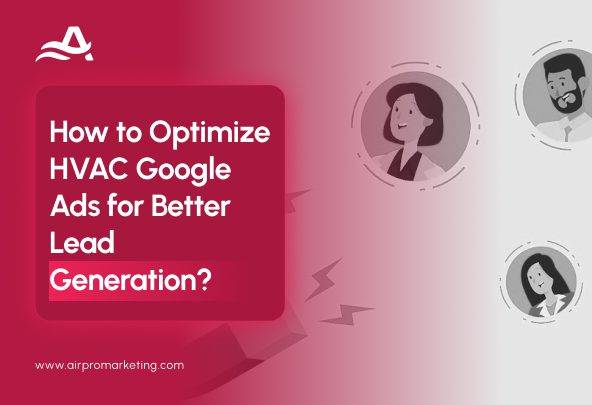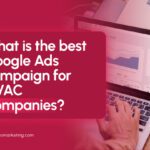In the congested HVAC industry, generating quality leads through online channels is essential. With the ever-growing reliance on search engines like Google, businesses need to ensure that their Google Ads campaigns are optimized for maximum efficiency. HVAC Google Ads can bring in substantial business, but only if the campaign is structured properly and continuously monitored for improvements.
HVAC Google Ads are paid advertisements created through Google Ads, specifically designed for businesses in the Heating, Ventilation, and Air Conditioning (HVAC) industry. These ads appear on Google search results or across the Google Display Network when users search for HVAC-related services like installation, repair, or maintenance. If you’re a small HVAC business or a large service provider, you need to optimize your Google Ads strategy to attain increased lead generation, more calls, and ultimately, more revenue.
Key Points for Optimizing HVAC Google Ads
Optimizing your HVAC Google Ads campaign starts with understanding your audience and structuring your campaign to target high-intent users. Getting the right message in front of the right person at the right time can make all the difference.
Key Points for Optimization:
- Targeting the Right Keywords: Use high-intent search terms that reflect what your potential customers are actively searching for.
- Ad Relevance & Copy: Craft compelling ads with urgency and clear value propositions to drive action.
- Landing Page Experience: Ensure that your landing page is optimized for conversions with a mobile-first design and trust-building elements.
- Bid Adjustments: Monitor performance and adjust bids based on time of day, device, or geographic location.
When optimizing your HVAC Google Ads, start by structuring campaigns with different ad groups for various services like repairs, installations, or emergency HVAC services. Additionally, prioritize targeting geographic locations with high demand for HVAC services. By making these strategic adjustments, you’ll ensure that your ads reach potential customers who are more likely to convert.
How to Fix Common Problems in HVAC Google Ads Campaigns?
Many HVAC companies face the issue of low lead quality or poor conversion rates despite running HVAC Google Ads campaigns. So, what’s the root cause of this problem?
Problem:
- Irrelevant or Low-Intent Keywords: If you’re targeting keywords that don’t show clear purchase intent, you might be attracting clicks from individuals who aren’t ready to convert.
- Generic Ad Copy: Ads that don’t communicate a clear value proposition or urgency can fail to stand out.
- Ineffective Landing Pages: If your landing pages are not optimized for conversions, visitors might click away before taking action.
Solution:
- Focus on High-Intent Keywords: Start by focusing on keywords such as “emergency HVAC repair,” “24/7 HVAC service near me,” or “HVAC installation cost.” These keywords indicate a user is ready to make a decision and need immediate service.
- Create Engaging Ad Copy: Use clear and concise ad copy that highlights what makes your HVAC services unique, whether it’s 24/7 availability, licensed technicians, or affordable pricing. Include a call to action like “Call now for a free estimate!”
- Optimize Landing Pages for Conversion: Ensure your landing pages are tailored to each service type and are optimized for both desktop and mobile users. Include trust-building elements like testimonials, certifications, and clear calls to action.
Step-by-Step Guide to Optimizing Your HVAC Google Ads Campaign
Now that we understand the key strategies for optimizing your HVAC Google Ads, let’s look into this step-by-step guide on how to optimize your campaign for better lead generation.
Step 1: Keyword Selection
- Focus on High-Intent Keywords: Use specific, service-based keywords like “AC installation,” “HVAC repair near me,” and “24/7 furnace service.” Long-tail keywords like “best energy-efficient HVAC systems” are also valuable for targeting niche audiences.
- Implement Negative Keywords: To avoid wasting the budget on irrelevant clicks, include negative keywords like “free,” “DIY,” or “cheap.”
Step 2: Write a Compelling Ad Copy
- Include Urgency: Use phrases like “Same-Day Service,” “Free Estimates,” or “24/7 Service” to create a sense of urgency.
- Use Unique Selling Propositions (USPs): Highlight what sets your HVAC business apart, such as “Licensed Technicians” or “Affordable Financing Options.”
- Utilize Ad Extensions: Add call extensions for easy contact, location extensions to show your service areas, and SiteLink extensions to highlight specific services.
Step 3: Optimize Your Landing Pages
- Mobile-First Design: Since a significant portion of HVAC searches are mobile, ensure your landing page is optimized for mobile devices with fast load times and easy navigation.
- Action-Oriented Calls-to-Action (CTAs): Use phrases like “Get Your Free Estimate Now!” or “Schedule Your Service Today!” to encourage visitors to act.
- Include Trust Signals: Incorporate customer reviews, industry certifications, and before/after photos to build trust and credibility.
Step 4: Bid Adjustments and Monitoring
- Time-of-Day Adjustments: Increase bids during peak hours when users are more likely to need HVAC services, such as early mornings or evenings.
- Device Bid Adjustments: Given the urgency of HVAC services, prioritize mobile bids, especially for emergency repair services.
- Monitor Performance Metrics: Track Cost Per Lead (CPL) and Click-Through Rate (CTR). Aim for a CPL between $8-$16 and a CTR of 5–10%.
Increase visibility, improve rankings, and grow your HVAC business with expert SEO solutions
Basic Pitfalls to Avoid
While optimizing HVAC Google Ads is essential for lead generation, there are several common mistakes to avoid:
- Poor Geotargeting: Ensure that you limit your ads to relevant service areas. Don’t waste your budget on irrelevant clicks from outside your geographic reach.
- Slow Response Time: Studies show that 50% of HVAC leads choose the first responder. Using CRM tools or chatbots can help you respond instantly to new inquiries.
- Generic Landing Pages: Don’t send traffic to your homepage. Instead, dedicate specific landing pages for each service to increase relevance and conversions.
Conclusion
Optimizing your HVAC Google Ads can make a significant difference in lead generation and business growth. By implementing targeted strategies such as focusing on high-intent keywords, refining your ad copy, and ensuring a seamless user experience, you can maximize ROI and drive qualified leads.
Struggling to attract quality leads for your HVAC business?
At Air Pro Marketing, we specialize in crafting high-performance HVAC Google Ads campaigns that deliver results. Our team understands the nuances of the HVAC industry and uses advanced targeting strategies to ensure your ads are reaching the right audience. With our expertise, we help you attract high-intent customers who are actively searching for your services, whether it’s urgent repairs or new installations.
Let us handle your digital marketing while you focus on what you do best – providing top-notch HVAC services. Contact us today, and let’s get your business the visibility and leads it deserves!
FAQs
- How can I improve my HVAC Google Ads campaign for better results?
To improve your HVAC Google Ads campaign, focus on high-intent keywords, ensure your ad copy is compelling, use ad extensions effectively, and optimize your landing pages for conversions. - What are Local Service Ads (LSAs), and how do they help HVAC businesses?
Local Service Ads (LSAs) are a paid-per-lead model that allows HVAC businesses to display their services directly on Google search results. They are especially useful for increasing visibility and generating immediate leads from local searches. - How much should I spend on HVAC Google Ads?
Your budget for HVAC Google Ads should depend on your specific goals, service area, and competition. However, aiming for a Cost Per Lead (CPL) between $8–$16 is a good starting point for most businesses.
Author Profile
Latest entries
 Digital MarketingMay 22, 2025What to Expect When You Hire an HVAC Marketing Agency?
Digital MarketingMay 22, 2025What to Expect When You Hire an HVAC Marketing Agency? Digital MarketingApril 28, 2025What is the Best Google Ads Campaign for HVAC Companies?
Digital MarketingApril 28, 2025What is the Best Google Ads Campaign for HVAC Companies? Digital MarketingApril 25, 2025Why is Web Development Important for HVAC Companies?
Digital MarketingApril 25, 2025Why is Web Development Important for HVAC Companies? Digital MarketingApril 25, 2025What are the Best Web Development Practices for HVAC Businesses?
Digital MarketingApril 25, 2025What are the Best Web Development Practices for HVAC Businesses?




